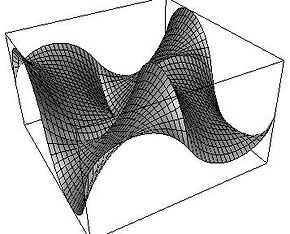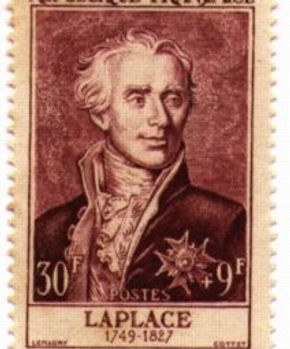Web-based interactive learning package

Small-Amplitude Wave Theory
Introduction of Small-Amplitude Wave Theory
Real water waves propagate in a viscous fluid over an irregular bottom of varying permeability. A remarkable fact, however, is that in most cases the main body of the fluid motion is nearly irrotational. This is because the viscous effects are usually concentrated in thin “boundary” layers near the surface and the bottom. Since water can also be considered reasonably incompressible, a velocity potential and a stream function should exist for waves. To simplify the mathematical analysis, numerous other assumptions must and will be made as the development of the theory proceeds.

Boundary Value Problems
It was like numerous classic problems of physics and most analytical problems in engineering that those may be posed as boundary value problems. Reviewing of the two-dimensional periodic water wave boundary value problem is useful for formulating the small-amplitude water wave problem.

Governing Equations
With the assupmtion of irrotational motion and an incompressible fluid, a velocity potential exists which should satisfy the continuity equation. Moreover, the divergence of a gradient leads to the Laplace equation, which must hold throughout the fluid.
The governing second-order differential equation for the fluid motion under a periodic two-dimensional water wave is the Laplace equation, which holds throughout the fluid domain consisting of one wave
∇²𝜙 = 0, 0 < x < L, -h < z < ƞ
Assuming water to be incompressible, inviscid and irrotational, Laplace Equation must hold throughout the fluid.
∇²𝜙 = ∂²𝜙/∂x² + ∂²𝜙/∂y² + ∂²𝜙/∂z² = 0
where u = -∂𝜙/∂x, v = -∂𝜙/∂y, w = -∂𝜙/∂z

Boundary Conditions
Boundary Conditions are essential components for solving the boundary value problem. For two-dimensional periodic water wave boundary value problem, the required four boundary conditions consist of lateral boundary conditions, bottom boundary condition, kinematic free surface boundary condition, and dynamic free surface boundary condition.

Dispersion Equation
Dispersion Equation
ơ² = gk tanh kh
where ơ = 2π/T, and k = 2π/L
This equation is called the dispersion equation because it describes the way a field of propagating waves consisting of different frequency components would separate or “disperse” due to the different celerities of the various frequency components.
For deep water (i.e. kh > π ), ơ² = kh (kh is large for deep water)
For shallow water (i.e. kh < π/10 ), ơ² = gk²h (kh is small for shallow water)
See also
Wave dispersion and swell formation
https://www.youtube.com/watch?v=orLlhZw7OoQ
Explain what is wave dispersion and the formation of swelling

Waves with Uniform Current
This problem can be solved simply by adopting a reference frame which moves with the current U₀. With reference to the new coordinate system, there is no current and the methods, equations and solutions obtained are therefore identical to those obtained for the case of no current.
It should be noted that the wave length is the same for both the moving and stationary systems. The period T with respect to a stationary reference system is related to the period T’ relative to the moving reference system by
L = TC = T’C’ = T’(C - U₀)
or T = T’(1 - U₀/C)
Also the dispersion relationship is given by (C - U₀)² = (g/k) tanh kh